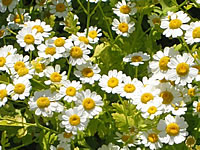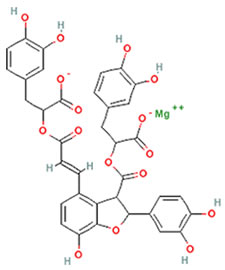|
Treating
Headache, Hypertension, and Atherosclerosis
|
HEADACHE AND MIGRAINE

Tanecetum parthenium
for migraine headaches
Jeremy will
discuss special herb combinations for a wide
range of headache patterns, together with
their associated Chinese syndromes, for example:
- Myalgia
- Sinusitis
- Facial neuralgia
- Irritability and anger
- Premenstrual disorders
- Fear and tremors
- Anxiety
- Tics and tremors
- Exhaustion
- Anemia
- Hypoglycemia
Jeremy will discuss modifications to the basic
combination to meet changing situations.

Crataegus monogyna for
hypertension, atheroma,
and arrhythmia
Jeremy will discuss details of his herb
combinations to assist treatment of hypertension,
atherosclerosis, and thrombosis. For example, when these disorders
are associated with:
- Heat sensations
- Violent anger
- Labile blood pressure
- Obesity
- Atherosclerosis
- Thrombosis
- Prevention of CVA and treatment
of CVA sequelae
- Nervous exhaustion and spasms
|
|
HERB COMBINATIONS BASED ON RESEARCH
DATA
There is increasing research evidence that
herbs can help to prevent and repair cardiovascular
cell
damage. For example:
- Polygala species have been reported to
have anti-inflammatory, hypolipidemic, hypotensive,
anti-ischemic,
diuretic, and neuroprotective actions
- Scutellaria species or their isolated
constituents have been reported to have antioxidative,
anti-inflammatory, anti-immunosupressive, hepatoprotective,
anxiolytic, neuroprotective, cardiovascular protective,
antithrombotic, and antihypertensive actions
Jeremy has designed special herb combinations
based on research data, to assist treatment of
hypertension, atherosclerosis, and thrombosis.
MYOCARDIAL INFARCTION AND CVA
Herb combinations can be used to help
to prevent myocardial infarction and CVA, and
to assist in
the treatment of their sequelae.

Tanshinoate B from Salvia miltiorrhiza
Salvia miltiorrhiza (dan shen) root extracts have
been reported to have cardioprotective action and
to have neuroprotective effects against ischemic
stroke.
This was reported to be partly due to magnesium
tanshinoate B, otherwise known as magnesium lithospermate
B.
|
|
|
| |
|
|